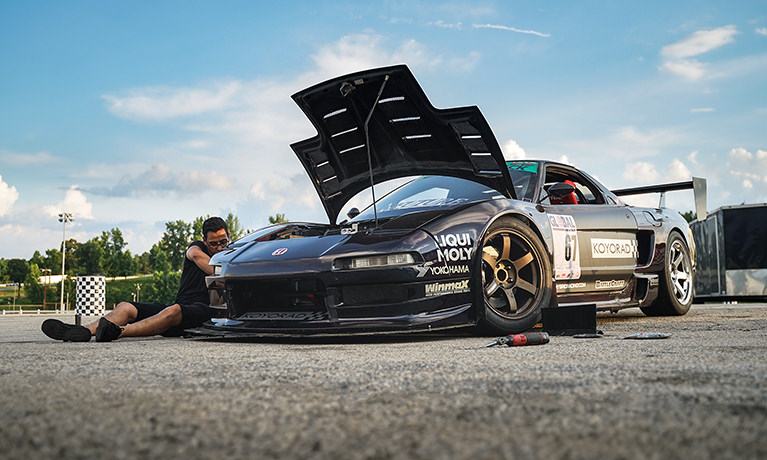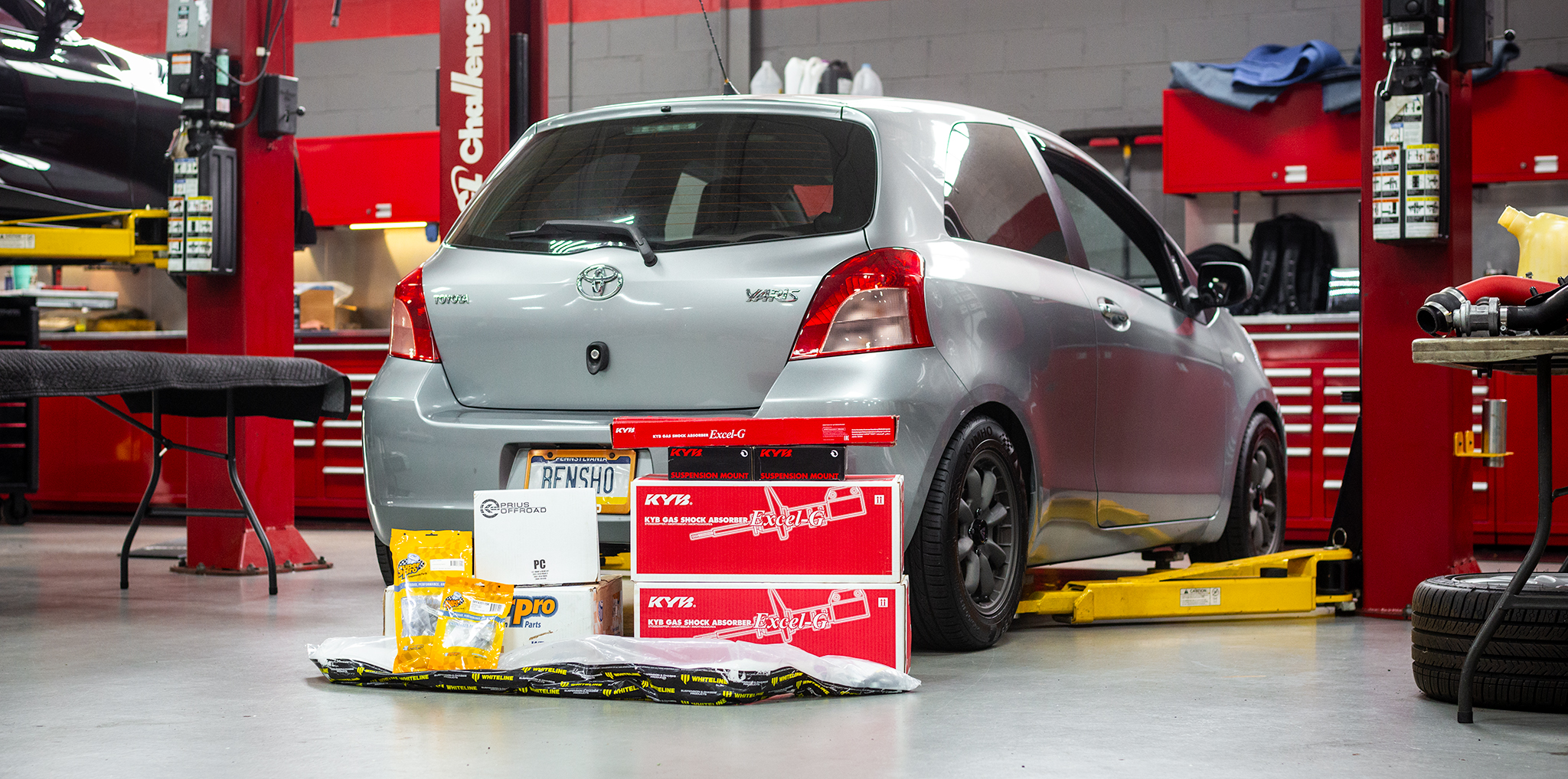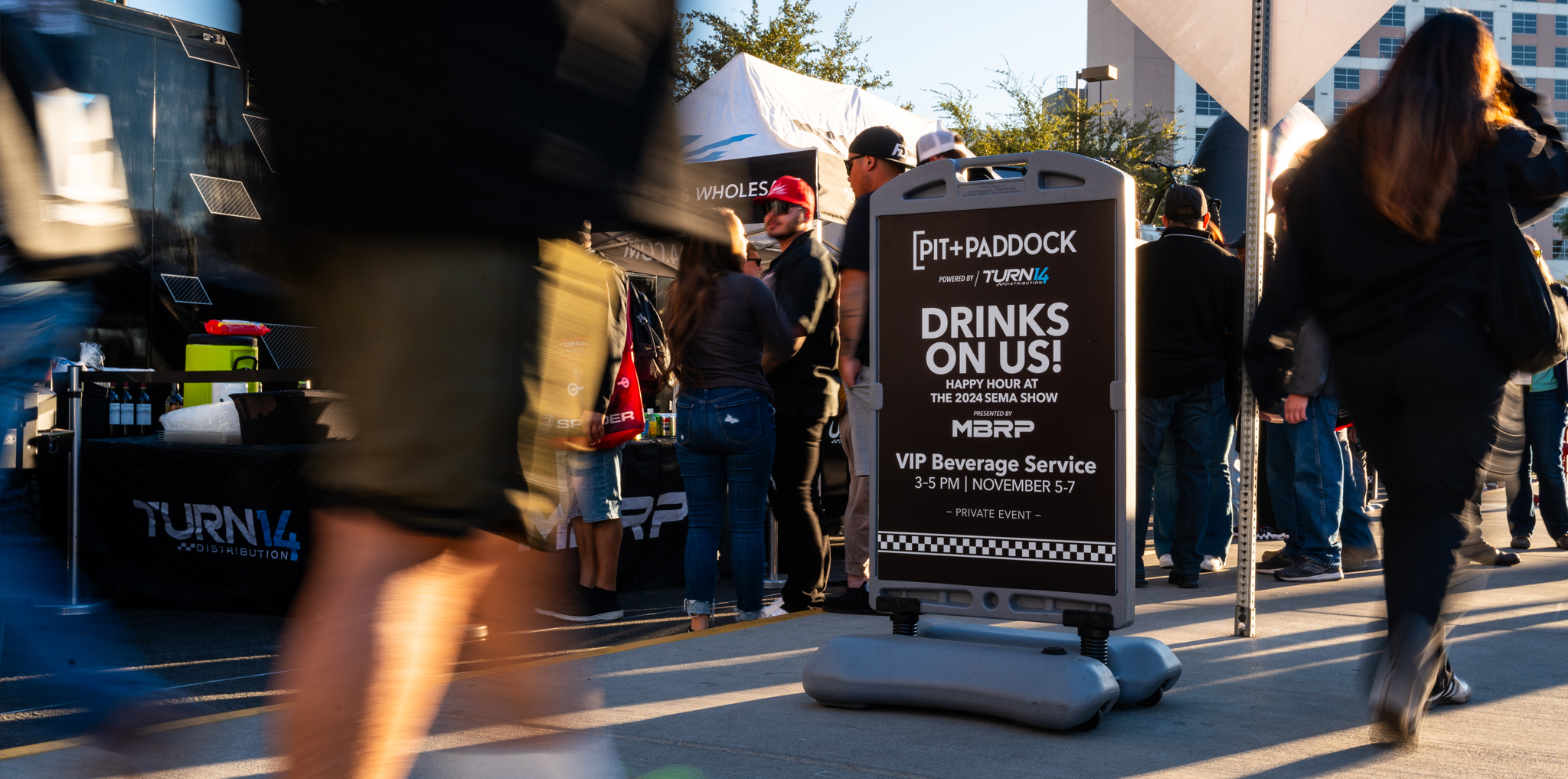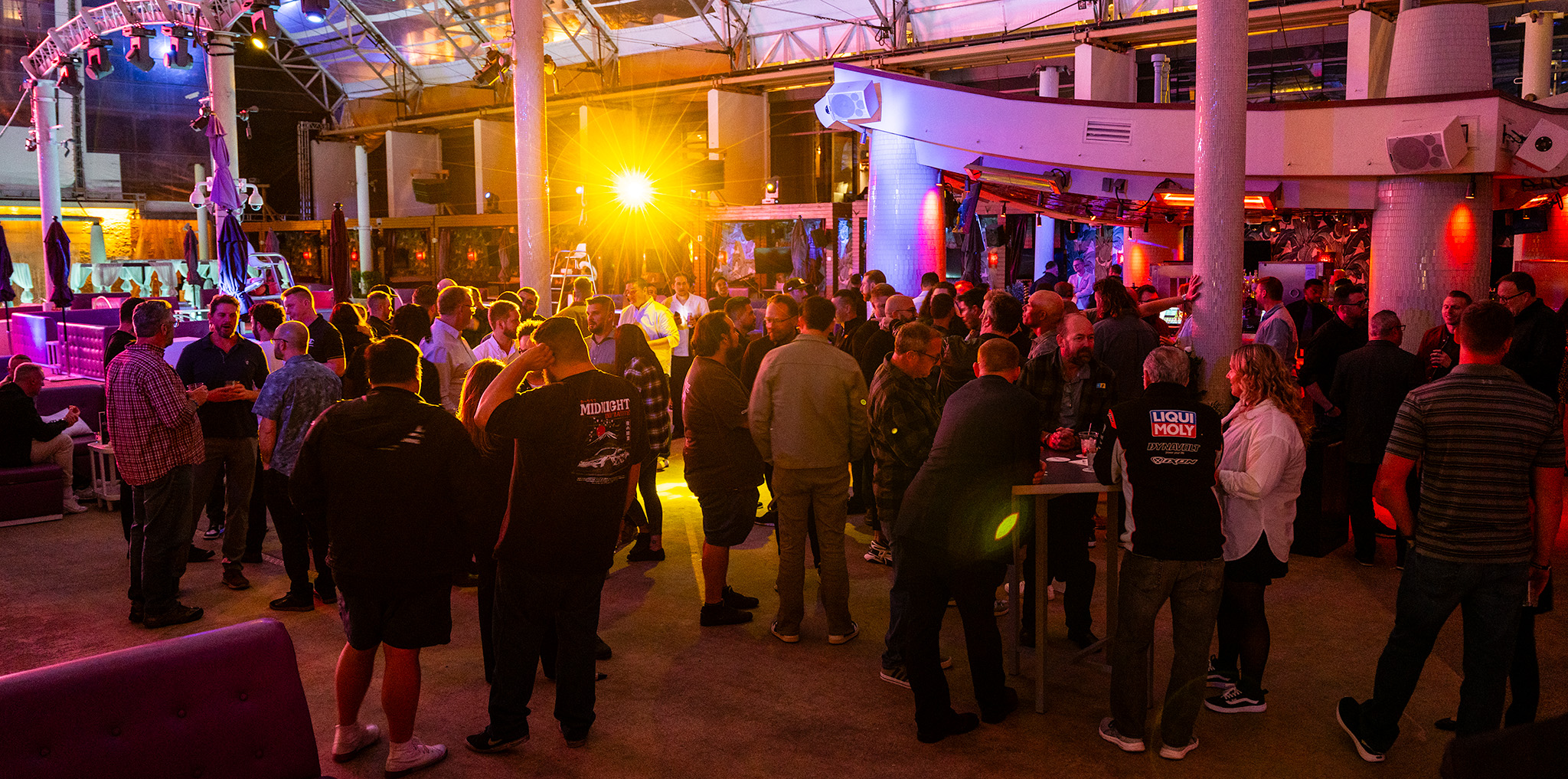Photography by Muoi Tran
Global Time Attack (GTA) at Road Atlanta is an event that I have looked forward to attending for years. While Buttonwillow Raceway Park in Southern California sets the standard for North American time attack events, Michelin Raceway Road Atlanta in Braselton, Georgia, is where the East Coast sets the bar. The track is fast, lined with walls, and has some of the country’s highest-commitment corners.
COVID-19 has led to a compacted motorsport schedule for racing series throughout the world, including GTA. Despite having only four events on the calendar, the new modified schedule put Road Atlanta only three weeks after Round 1 at The Ridge Motorsports Park in Shelton, Washington. Coming off the high of victory at GTA’s season opener at The Ridge, we got the car back home and immediately made necessary repairs. Thirteen days later, we loaded the RS Future x Koyorad NSX back in the trailer, and my girlfriend, Muoi Tran, and I made the trek to Atlanta.
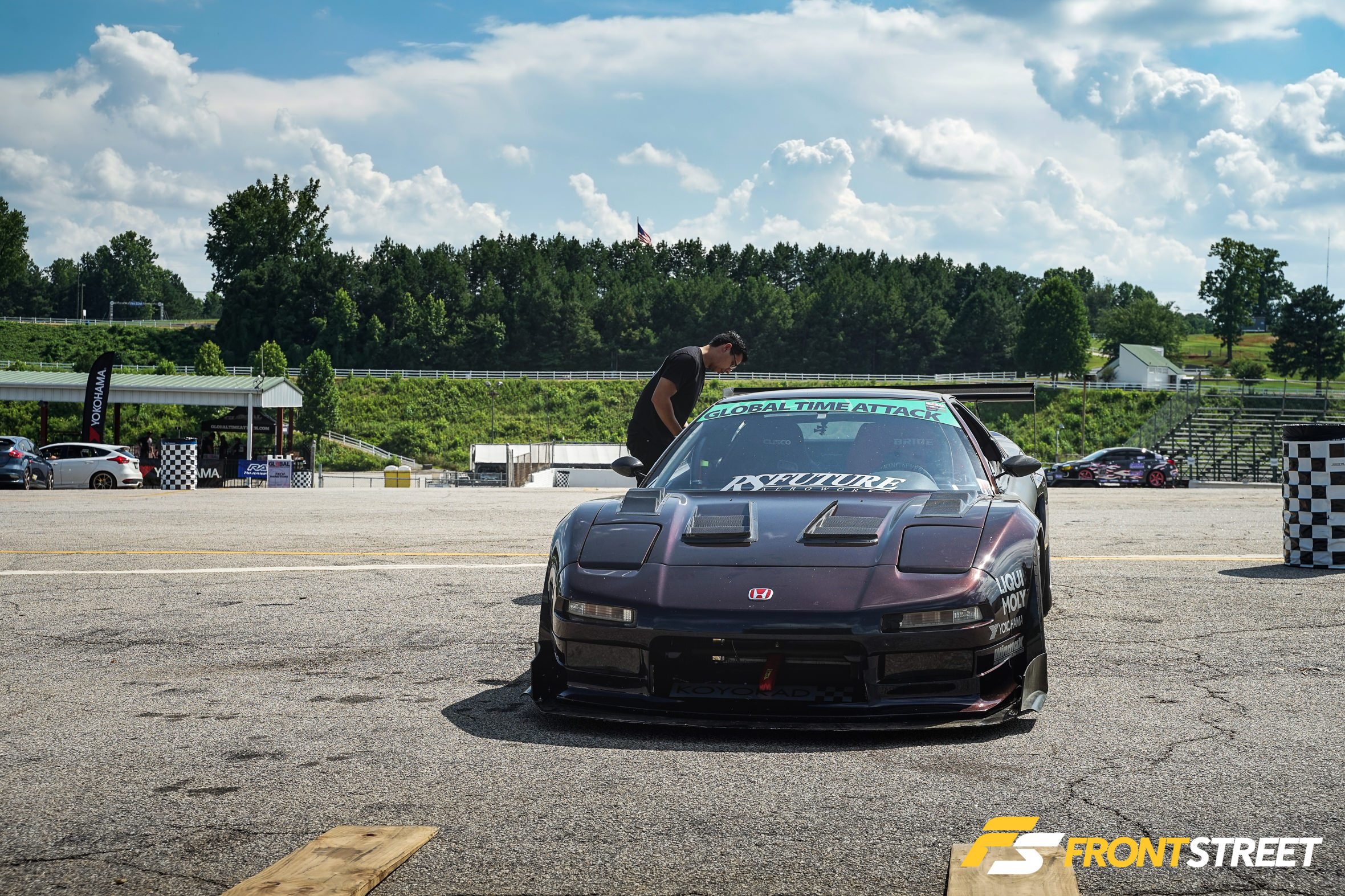
We arrived Thursday night, and shortly thereafter, the other half of our team, Touda Bentatou and Scott Dukeshire, landed and met us at the hotel. The same crew beside me at The Ridge accompanied me at Road Atlanta as well. Their help has been invaluable, and the trip is made much easier thanks to them. Touda and Muoi help with everything from logistics to track support, and Scott not only helps me service the car but was also kind enough to lend me his truck and trailer for the trip.
Day One
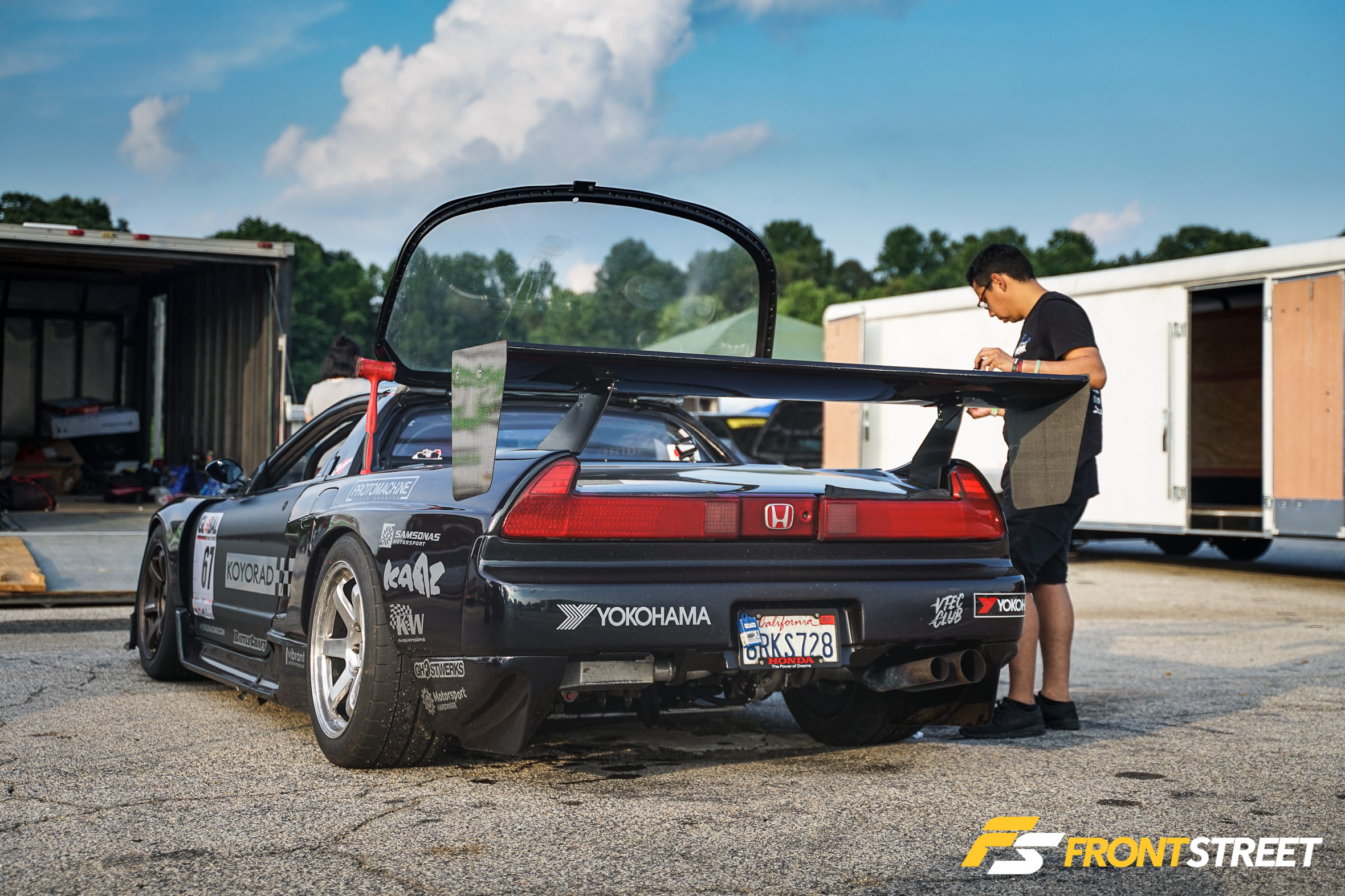

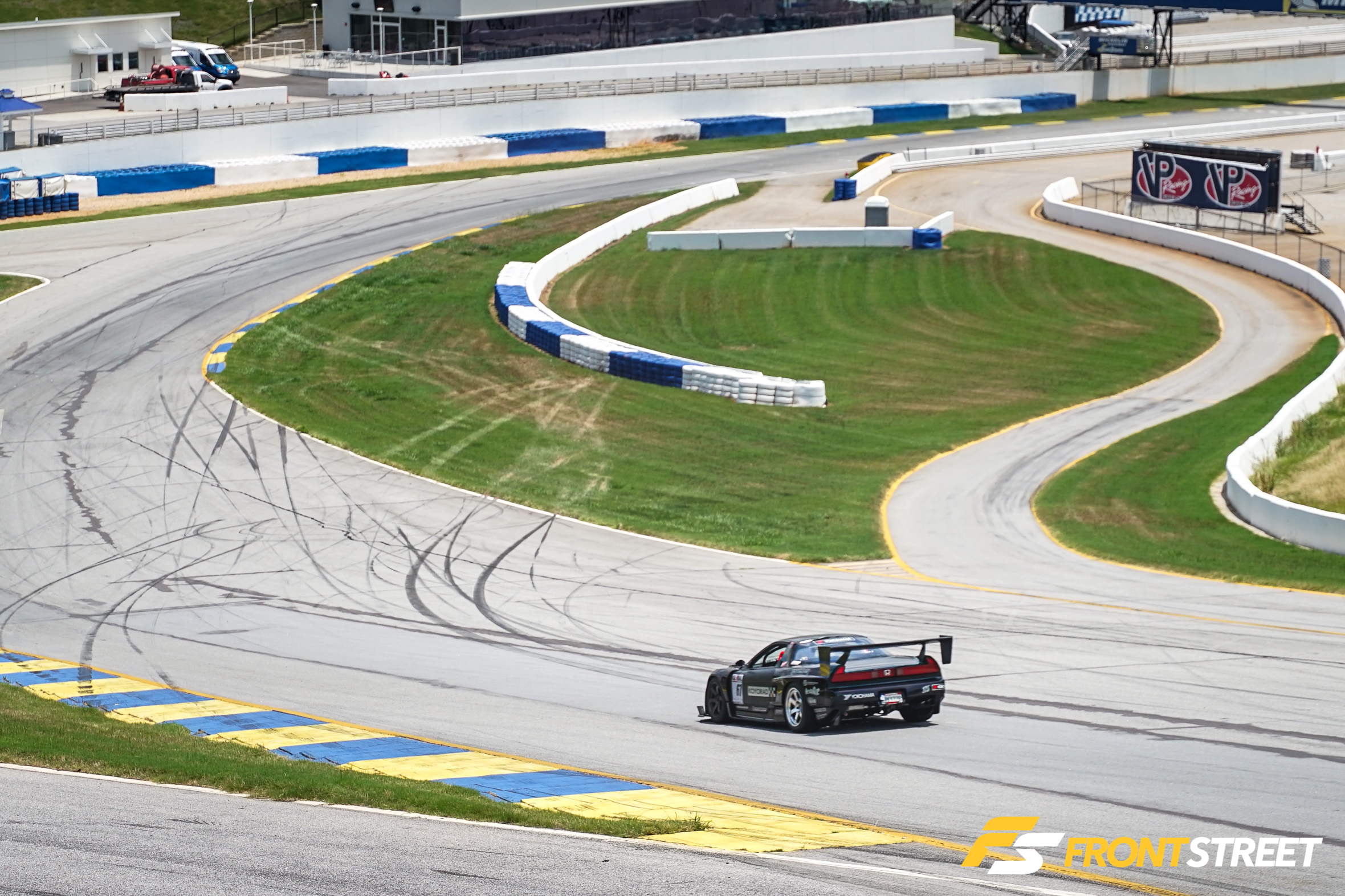
The next day we made our way to the track. Our first impression was memorable, to say the least. Driving through the gates, we were greeted by a pair of Porsche Cup cars descending the formidable Turn 12. For those unfamiliar, Turn 12 is a high-commitment corner. You drive over a blind crest at triple-digit-speed, then descend the equivalent of an eight-story-building. From there, a high-speed right-hander with walls only a few feet from its exit finishes the obstacle. It’s the one corner I knew I would need to respect.
After the intimidating introduction, we made our way to the pits to unload and get through vehicle tech inspection. Both went smoothly, and I decided to brave the heat and go for a track walk. A track walk involves walking the race track to analyze the details that are difficult to see when you’re driving at speed. Often there are changes in pavement, cracks, or dips that can upset the car. Another important aspect is the curbing.
Curbing varies dramatically from track-to-track. At Circuit of the Americas, the curbs are a must for fast lap times, while The Ridge Motorsport Park’s curbs upset the car and are best avoided. Road Atlanta has a mix of both. Some of the curbs look like they would cut some time, while others look like they would destroy a splitter if you drove over them. The track walk was complete an hour later, and I felt well-prepared to start turning laps.
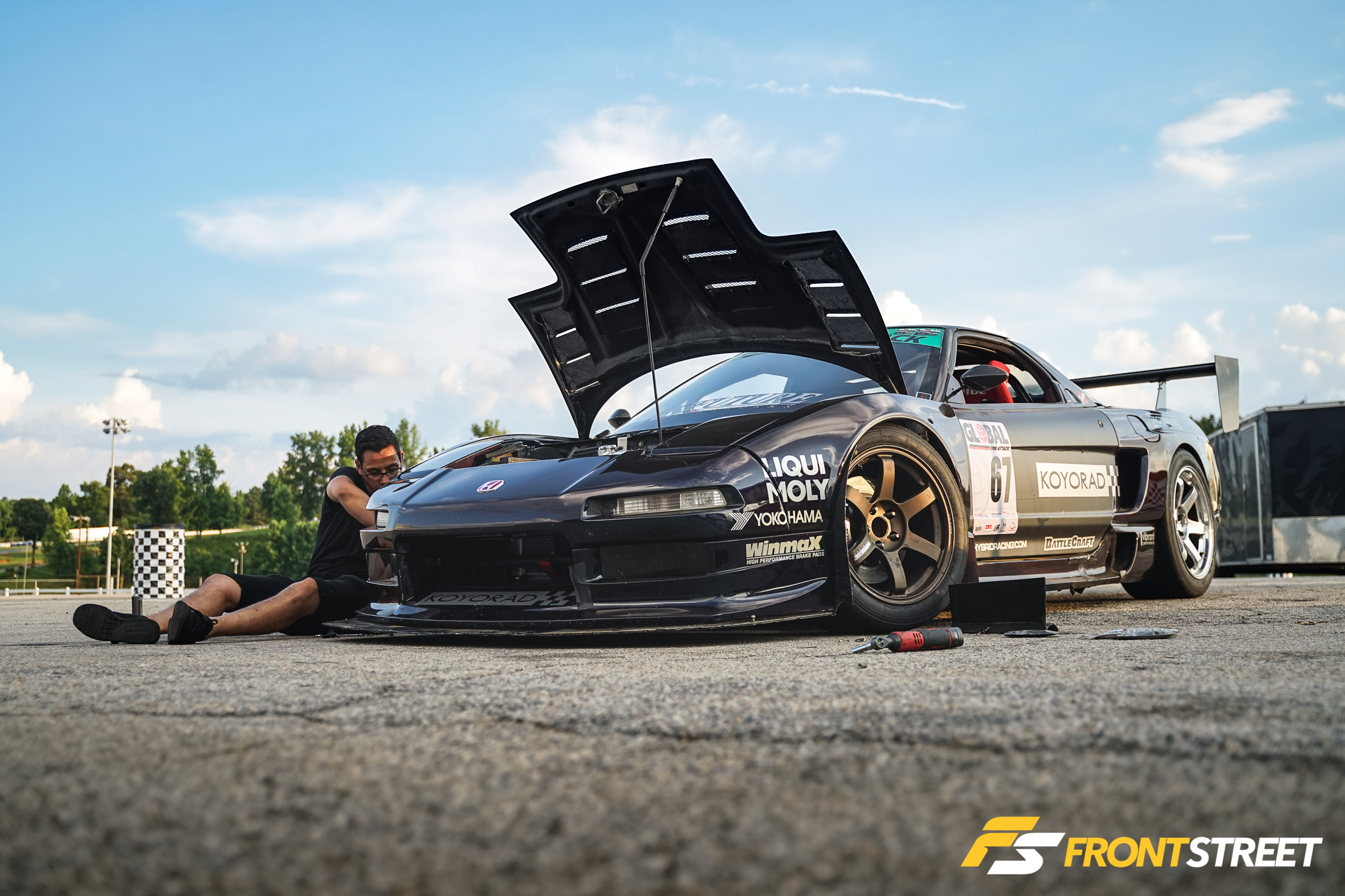
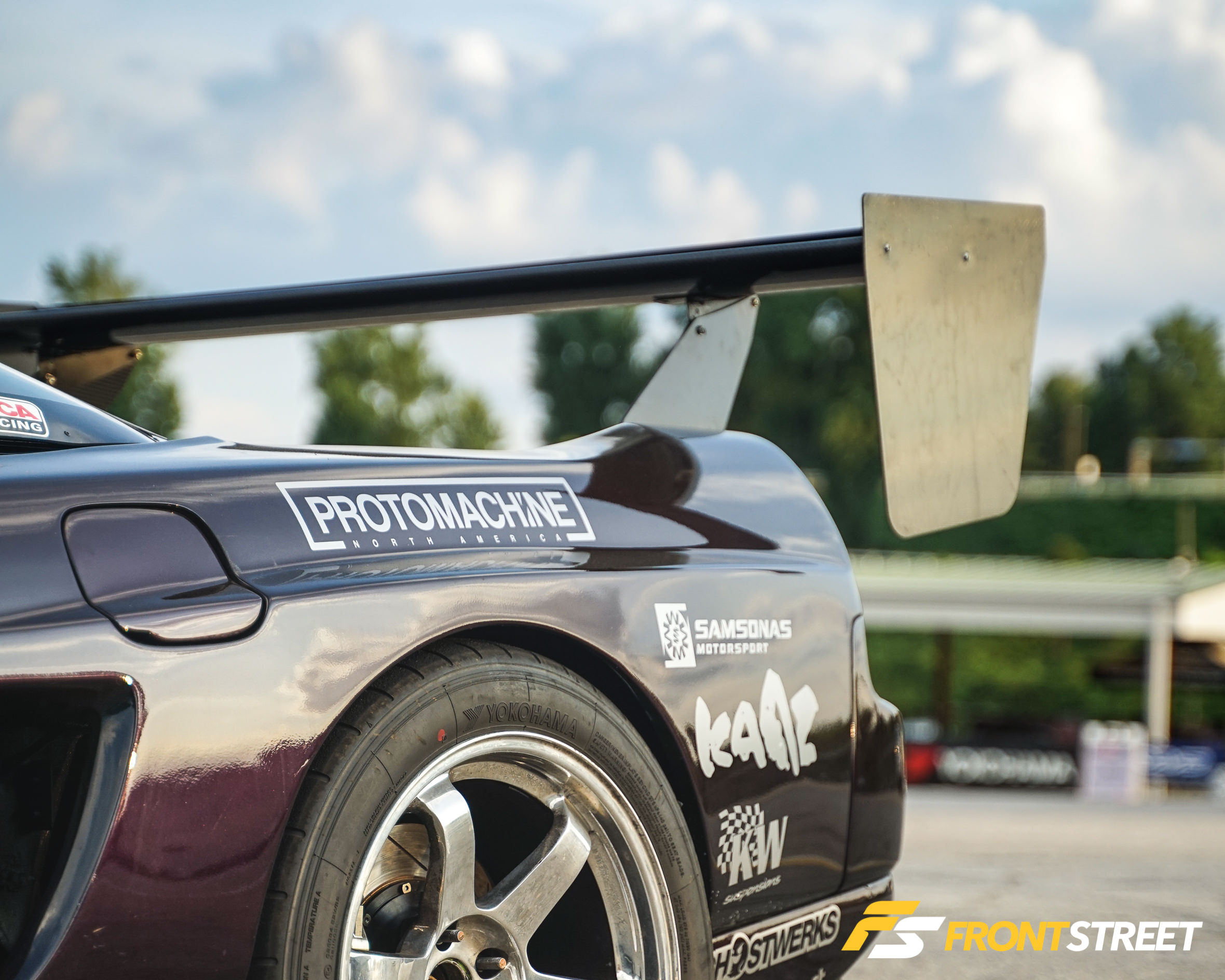
Day one was a late start with the event kicking off at noon. Hotlanta was living up to its name with air and track temperatures soaring, and unbelievable humidity for a Southern California native to endure. Suited up and already drenched in sweat, I was ready for my first session and equipped to take on the challenges Road Atlanta had to offer.
My goal for the first session was to learn the track and figure out the racing line. Once released, I drove a slow out lap, spotting the areas I knew would be challenging and trying to get a lay of the land. As I neared the start/finish straight, I turned it up and commenced my first hot lap. I went for a conservative hot lap to figure out shift points and further understand the racing line. I completed a single hot lap and was called into the pits by the track marshalls—I was shown the black flag.
Confused as to why I got black flagged, I pulled into the pits to find out that I did not have brake lights. I quickly parked the car and started diagnosing what was causing the lack of brake lights. A quick inspection showed the taillights were connected, and all other lights on the car were working. Next was a look inside the fuse box, where we found a popped fuse. Our problem was an easy fix, but it meant that we lost almost the entire first session and recorded a disappointing 1:40.4 lap.
The second issue we found was low voltage under load. At wide-open throttle, the charge would drop to 12 volts. We had seen the problem at prior events, but it never dipped this low. The car ran perfectly fine, but our data logging dash display would shut off and restart when the voltage dropped below a certain point. This voltage drop meant running half the lap without gauges and without any data to analyze after the session. Fortunately, we had a long gap between sessions one and two and decided to replace the alternator. More good news: the local AutoZone had an alternator in stock. We picked it up and swapped it out just in time for the second session.
The rest of the day got a little better than the first session. Unfortunately, the alternator did not cure our voltage issue, which meant that I would have to push through and essentially drive the weekend blind. The good news was that I was able to drive entire sessions at a time, running a combination of slow reconnaissance laps with hot laps in between those.
My goal for the day was to run as many laps as possible to learn the track. After a handful of trips around the circuit, it became apparent that the entrance of The Esses and Turn 12 are the most difficult parts of the racetrack. These challenges were compounded by the fact that my suspension was far too soft for the high speeds and elevation changes of Road Atlanta. The suspension bottomed out in multiple parts of the course, and the splitter was an inch or so off the ground for a majority of the lap. Through Turn 12, my left front wheel was buried so far in the fender, it was rubbing the wheel well and smoking.
As a precaution, I typically bring a box filled with springs of various rates, in the event that I need to change the setup trackside. However, during our rush to pack and get on the road across the country, the box of springs didn’t make it into the trailer. Naturally, I’ve never changed springs when I’ve brought them with me, and the one time I didn’t bring them, I needed them.
By the end of the day, I was able to cut a significant amount of time and finished the afternoon with a 1:30.2 lap. A few tenths away from my goal of beating the old 1:29.7 Street class record, which also put me into second place behind Jackie Ding and his blazingly quick GR Supra.
Day Two
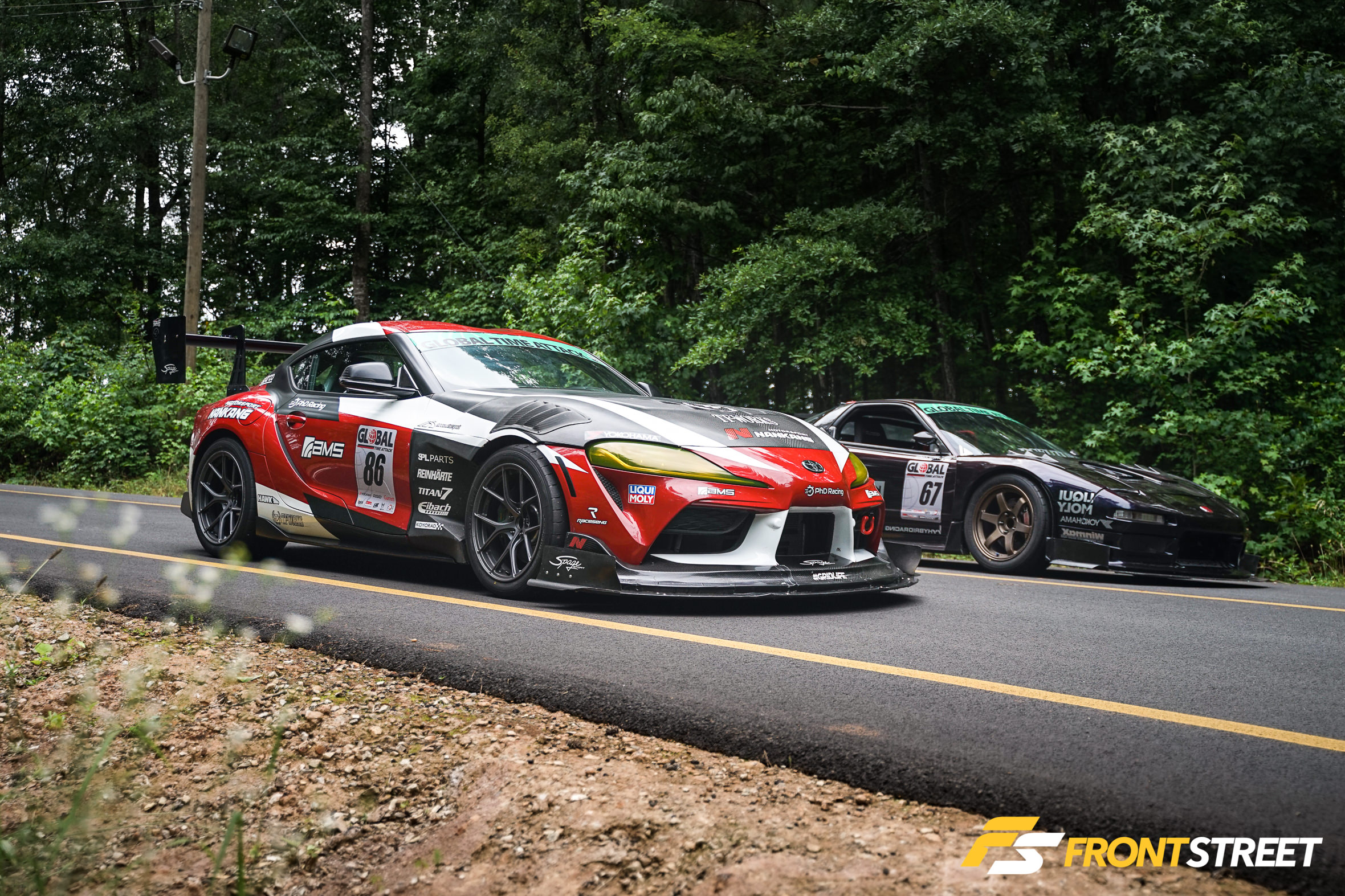
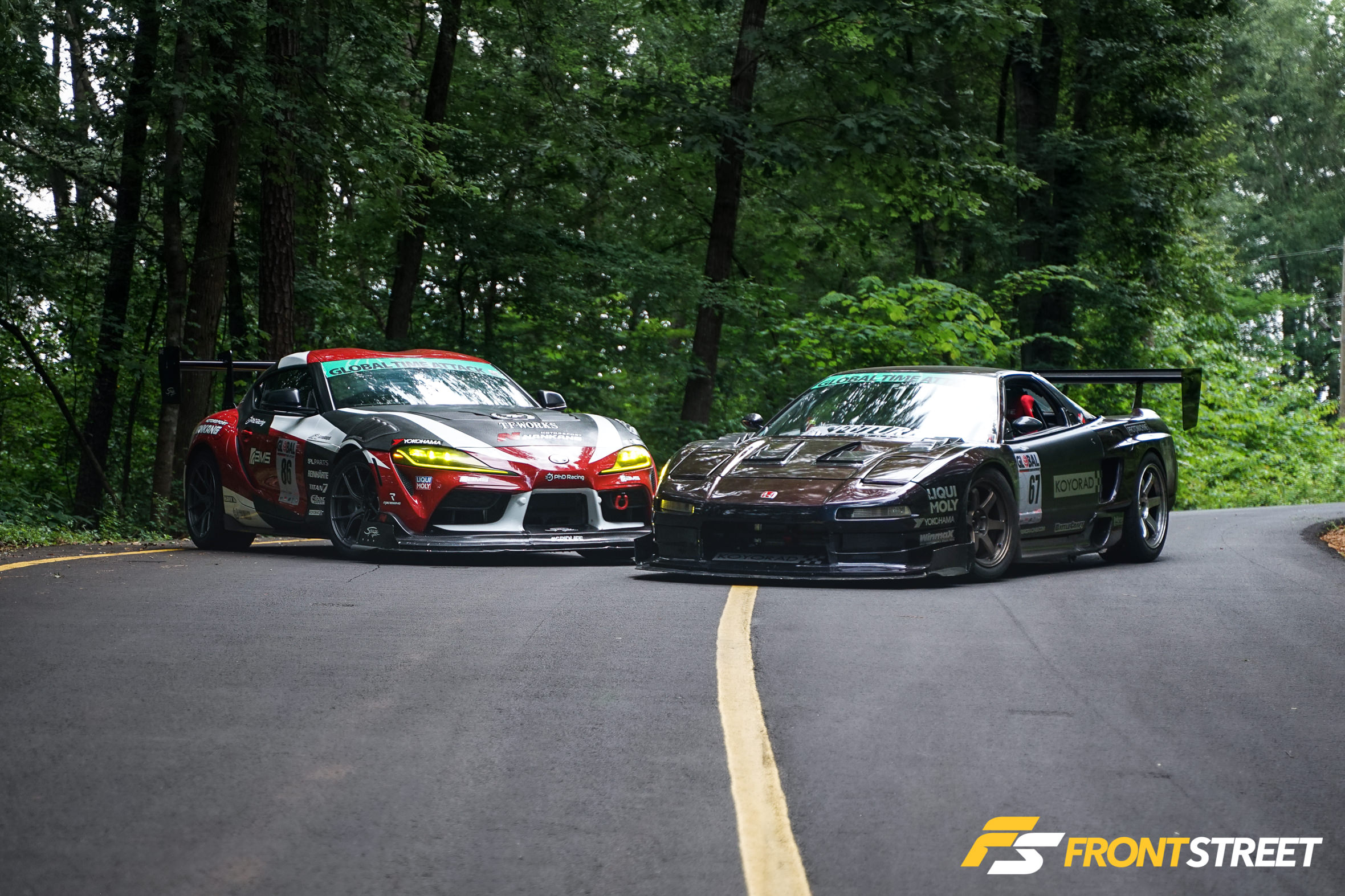
Everyone I had spoken with about Road Atlanta mentioned that the morning session is dramatically faster than the rest of the day. I knew that day two’s first session would be my best chance at a fast lap. I was starting to feel comfortable with the layout, and the temps were cool.
As I started my first lap, I noticed a ticking sound coming from the rear, which seemed to be related to wheel speed. As the lap progressed, the ticking turned into a vibration.
I slowed down for the end of the lap and still managed to run a 1:29.9, breaking the sub-30 barrier and getting nearer to my goal. The fastest session of the day was lost, and my closest competitor, Jackie, managed to go even quicker with a 1:27.9 lap. Undeterred, I got the car back into the pits and in the air. Removing the wheels exposed the culprit: an exploded axle boot accompanied by a wheelwell coated in axle grease. The high speeds and temperatures meant the axle boot had torn, and the axle’s internals started to wear. We immediately began tearing it apart to install the spare axle and check the vehicle’s alignment in time for the second session.
With the new axle installed, I made my way to the grid, ready for another fast lap. On the out lap, I noticed my intake air temperatures were higher than usual—much higher than they should be for a slow out lap. The next time around, I started my hot lap, and the intake air temps were quickly rising. Halfway through the lap, the dash was flashing high IATs, and I could feel the car losing power. I completed a single lap and brought it back into the pits to determine the cause. Frustrated by the loss of another session, I popped the hood and found the water-to-air intercooler reservoir was empty.
It turns out there was a small leak in the intercooler hose where it met the pump. It was close enough to the end of the hose that I could cut the leaking end and have enough length to reattach the hose to the pump. I repaired the leak and then spent most of the time between sessions bleeding the system. If you talk to anyone that has worked on an NSX, they’ll quickly let you know that bleeding anything cooling-related is a nightmare. The long hose lengths and height differences make it a challenge to surface any air pockets in the system. Despite this hurdle, the car was ready for session three.
Weeks before, we had a nearly perfect weekend at The Ridge, as the car was running correctly with few issues. Having so many minor problems hinder track time was starting to cause some frustration. We had lost the best session of the day and had half the sessions cut short due to issues we had never experienced before. With all of the dilemmas now sorted out, I was finally ready to beat my personal best time from the morning.

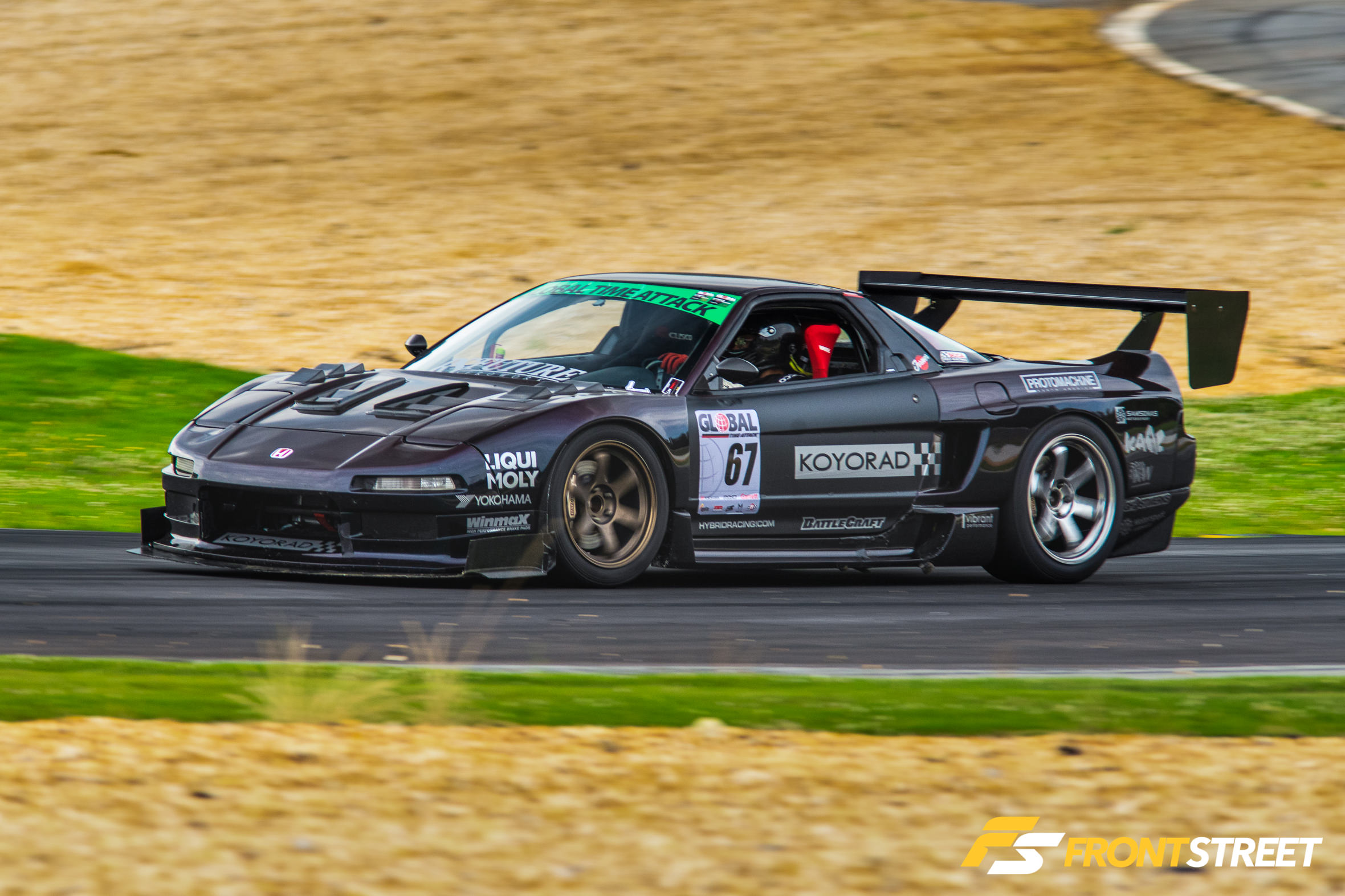
Conditions were scorching, as the track had been baking in the sun all morning; air temperatures were in the 90s. On my out lap, I was feeling more confident than ever. I had a good feel for where to be, what gear to be in, and how much of the track I could safely use. I cleared my mind and started my flying lap. Every corner was feeling better, the car was feeling good, and I navigated Turn 12 faster than any of my other laps. With no data, I just hoped I had run a new fastest lap. I finished the session, checked the times, and saw I had run a 1:29.1 lap—a bittersweet result.
I had accomplished my goal of beating the previous Street class record. Still, it wasn’t enough to beat Jackie, whose lightning-quick 1:27.9 lap set a new record earlier that morning. I was proud of our performance and how the team worked through the issues we had but was disappointed that I could not manage a lap representative of the car’s capabilities.
The last session was one that I drove just to enjoy the car and the circuit. The conditions were at their worst, and I knew there wouldn’t be much hope for a faster lap. I went out and soaked in Road Atlanta in all of its glory. The track lived up to everything I hoped for and taught a great lesson in what I needed to do to improve the car. We finished the day and made our way to the awards ceremony. While we always strive for the win, it wasn’t our day. Jackie drove an excellent weekend and got the most out of his Supra.
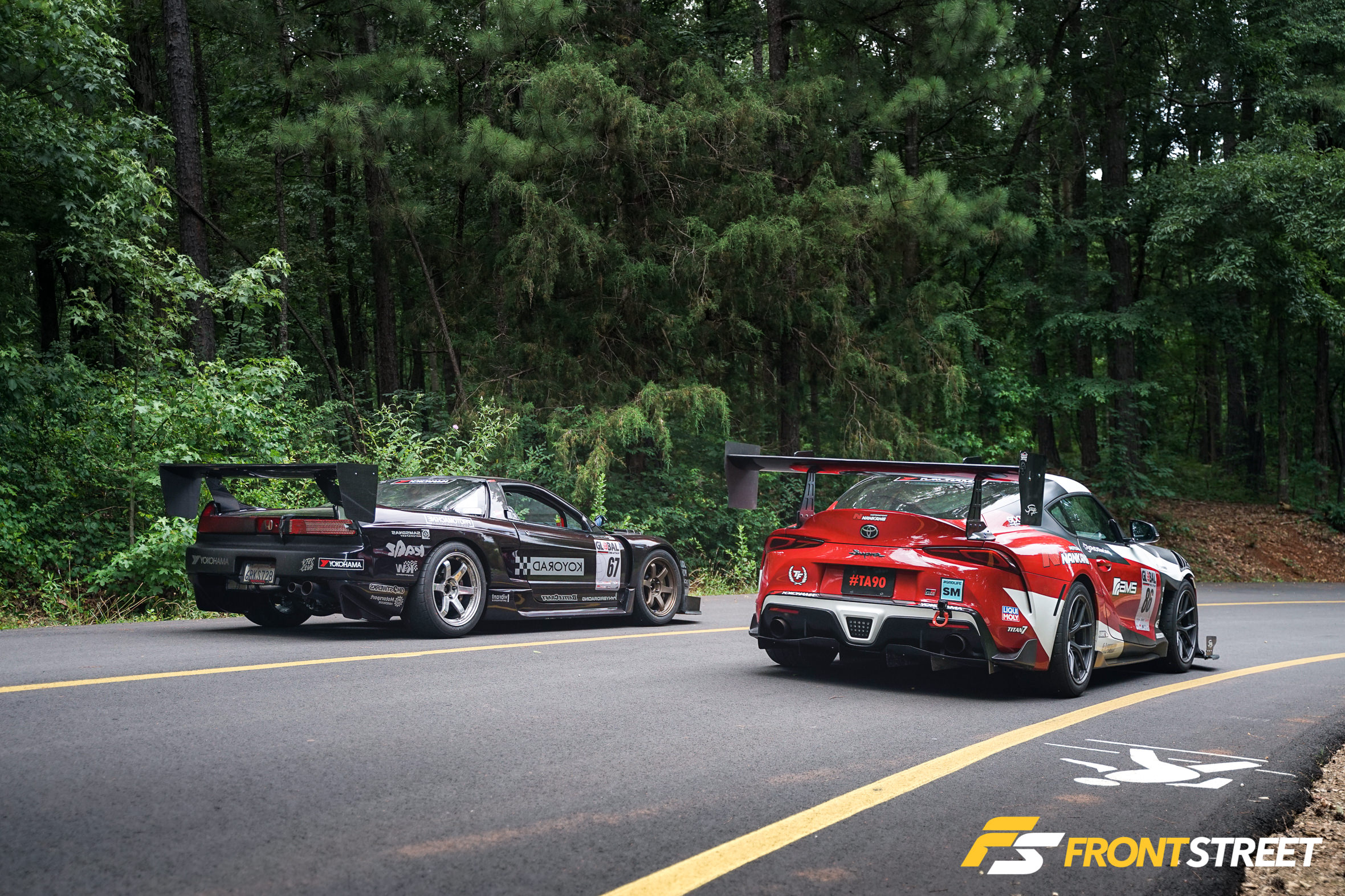


Overall, the Road Atlanta experience did not disappoint. I’d like to thank Touda, Scott, and Muoi for their help throughout the weekend. Finally, thank you to Koyorad for keeping our car cool! I’m already looking forward to making the trip back to Atlanta next year for another shot at the new record. For now, I’m focused on further testing with the car at an upcoming VTEC Club event in October before GTA Finals in November.
https://www.instagram.com/rsfuture_amir/
https://www.instagram.com/mmmuoi/

